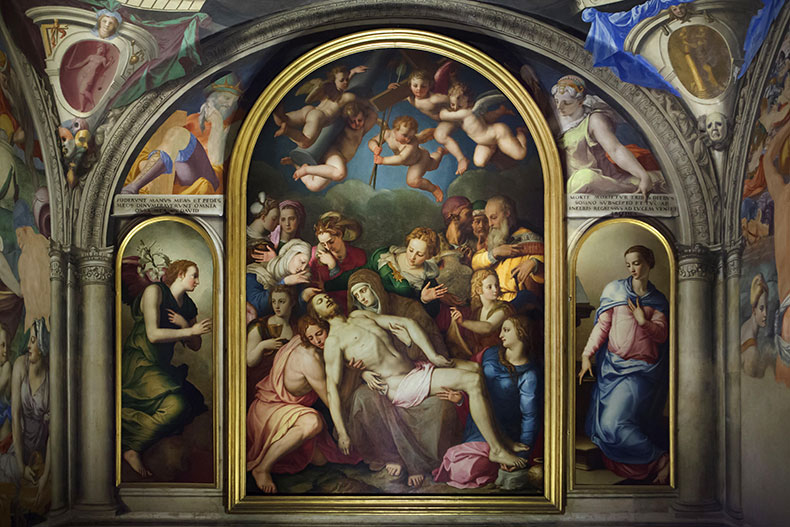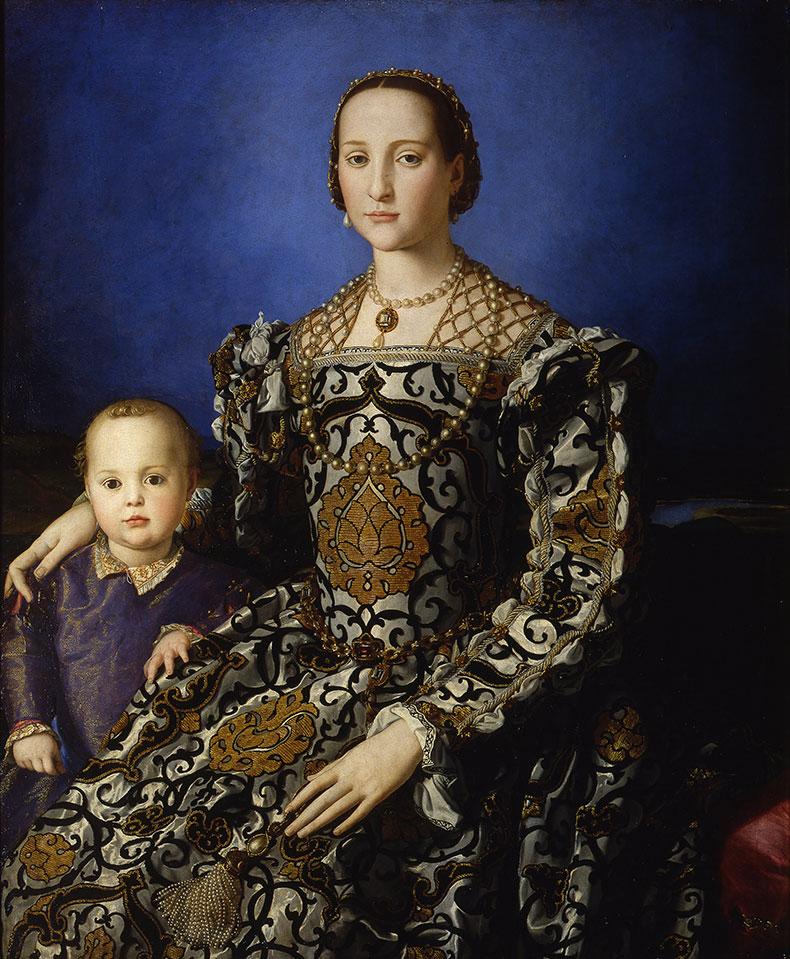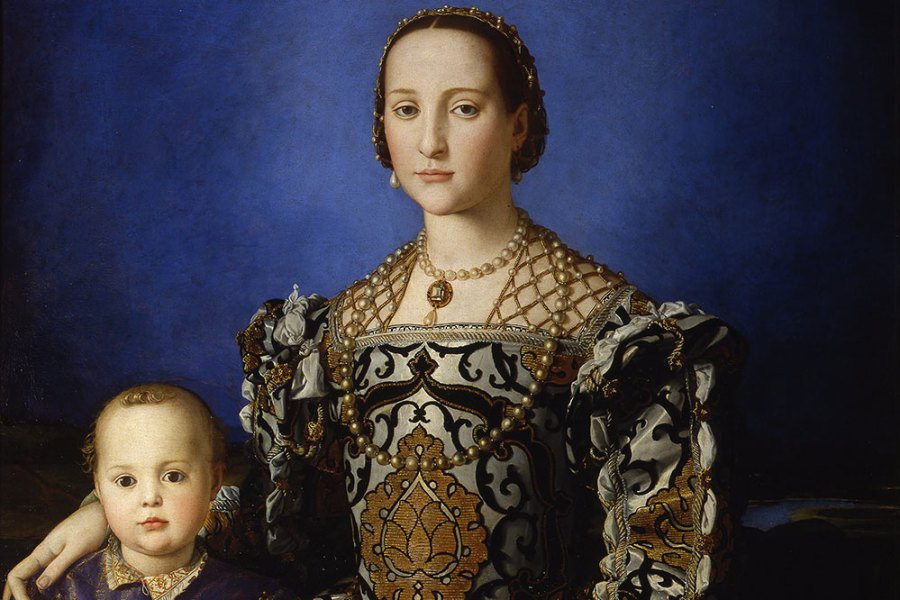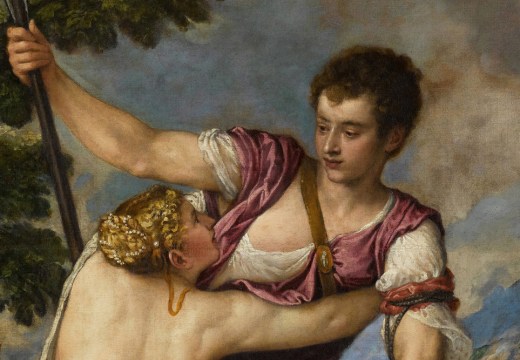The Spanish noblewoman Leonor Álvarez de Toledo y Osorio – better known as Eleanor of Toledo, and from 1539 as Duchess of Florence – was born in 1522. In honour of her 500th anniversary, a number of events have been organised in recent months, both in Florence and in other major cities across Tuscany, including Pisa and Arezzo. The second daughter of Pedro Álvarez de Toledo y Zúñiga, the Spanish viceroy of Naples, Eleanor married Cosimo I de’ Medici of Florence in 1539, thus consolidating the alliance between the house of Medici and the Habsburgs. (Under Charles V, Holy Roman Emperor, King of Spain, and Archduke of Austria, a Spanish imperial army had helped overthrow the Republic of Florence to install the Medici as rulers during the siege of Florence in 1529–30.)
Eleanor and Cosimo – who became the first Grand Duke of Tuscany in 1569 after his wife’s death – had 11 children together. Their sons Francesco and Ferdinando succeeded their father as Grand Dukes in 1574 and 1587. Eleanor often assumed the role of regent during Cosimo’s absences from Florence. This was an important political role – at times, she could almost be considered as co-ruler of the Florentine Republic – and it has led to her being considered one of the earliest ‘first ladies’ in European history, an impression that is underscored by the anniversary celebrations. These culminated in a two-day event held at the Palazzo Vecchio (30 November–1 December) that included an academic conference, a play on the life of the duchess, and a musical performance reflecting the choral tradition of the Medici organised by the Medici Archive Project.
But perhaps Eleanor’s most significant role was as a patron of the arts, in which capacity she can be compared with the likes of Isabella d’Este, Catherine de’ Medici, and Elizabeth I. In tandem with her husband, Eleanor served to continue the tradition of Medici patronage that had distinguished Florence since the days of Cosimo the Elder and then Lorenzo the Magnificent in the 15th century.

Deposition of Christ (1553) and Annunciation (1564), Bronzino. Palazzo Vecchio, Florence. Azoor Photo/Alamy Stock Photo
Eleanor’s earliest project was the decoration of her private chapel in the Palazzo Vecchio, for which she commissioned the mannerist artist Bronzino. Shortly after her marriage to Cosimo, the couple relocated from the Palazzo Medici to the Palazzo della Signoria, the former seat of the republican government of Florence. The chapel was built to designs by the architect and sculptor Giovanni Battista del Tasso in 1540–54, to form part of Eleanor’s private apartments. The chapel’s walls are adorned with writhing figures, narrating episodes from the Old Testament. As an overt display of Christian redemption and salvation – a conspicuous allusion to the triumph of the Medici dynasty – the composition of the fresco is both dynamic and artificial composition. With its saturated colouring, it offers a striking example of the Florentine maniera (or ‘mannerist’) style that was fostered at the Medici court, culminating in the Bronzino’s monumental altarpiece for the chapel, depicting the Lamentation (1545; second version 1553).
Bronzino was among the first propagators of this new ‘stylish style’ that was becoming the dominant pictorial mode in Florence. The style was characterised by the deliberate rejection of realism in preference for artifice and the ostentatious display of artistic technique. Bronzino’s portrait of Eleanor and her son Giovanni (1545) is a prime example. The marble-like quality of the figures’ faces and their elegant posturing, as well as the artist’s attention to Eleanor’s clothing, generate a sense of cool detachment – a far cry from the intimacy of the High Renaissance, and more reminiscent of early portraits of Elizabeth I, Eleanor’s contemporary. Depicting Eleanor with her second son, who was later made a cardinal, the portrait acts as evidence of Eleanor’s fertility, while asserting her dual role as regent and mother.

Portrait of Eleanor of Toledo and Her Son (1544–1545), Bronzino. Courtesy Uffizi Galleries, Florence
Perhaps the best-known example of Eleanor’s patronage today is that of the Boboli Gardens that lie behind the Palazzo Pitti. Built in 1458 by the banker Luca Pitti, the palace was bought by Eleanor in 1549 and subsequently became the principal residence of the grand dukes. Eleanor suffered from pulmonary tuberculosis – from which she would die at the age of 40 – and the location of the Pitti on the less crowded side of the Arno, with the expanse of land surrounding it, perhaps offered her a necessary retreat from the bustle of the city.
Eleanor began to cultivate the area around the Pitti in 1550 when she commissioned and supervised court artist Niccolò di Raffaello de’ Pericoli (known as Tribolo) to lay out the Boboli Gardens, creating an environment suitable for pageantry and court entertainment. Tribolo was already working for Cosimo at the Medici Villa di Castello, where he was responsible for the design of the garden, as described by Vasari. Despite his unexpected death in 1500, after which the completion of the Boboli project fell to Bartolomeo Ammannati, Tribolo’s design for the gardens, organised around a symmetrical and central axial plan, would provide the cornerstone for many later royal gardens across Europe, including Versailles.
A view of the Boboli is given by a painted lunette by Giusto Utens from 1599. The gardens ascend the hillside towards Stoldo Lorenzi’s Fountain of Neptune (1565), with the surrounding vegetation taking the form of an organic amphitheatre. After Eleanor’s death, two great weddings were hosted in the amphitheatre: that of her first son, Francesco, to Joanna of Austria in 1565; and that of Ferdinando to Christine of Lorraine in 1589. More than 3,000 guests attended the latter, fulfilling Eleanor’s wish for the palace and gardens to be a spectacle of Medici wealth and grandeur.
Unlimited access from just $16 every 3 months
Subscribe to get unlimited and exclusive access to the top art stories, interviews and exhibition reviews.














![Masterpiece [Re]discovery 2022. Photo: Ben Fisher Photography, courtesy of Masterpiece London](http://www.apollo-magazine.com/wp-content/uploads/2022/07/MPL2022_4263.jpg)
It’s time for the government of London to return to its rightful home